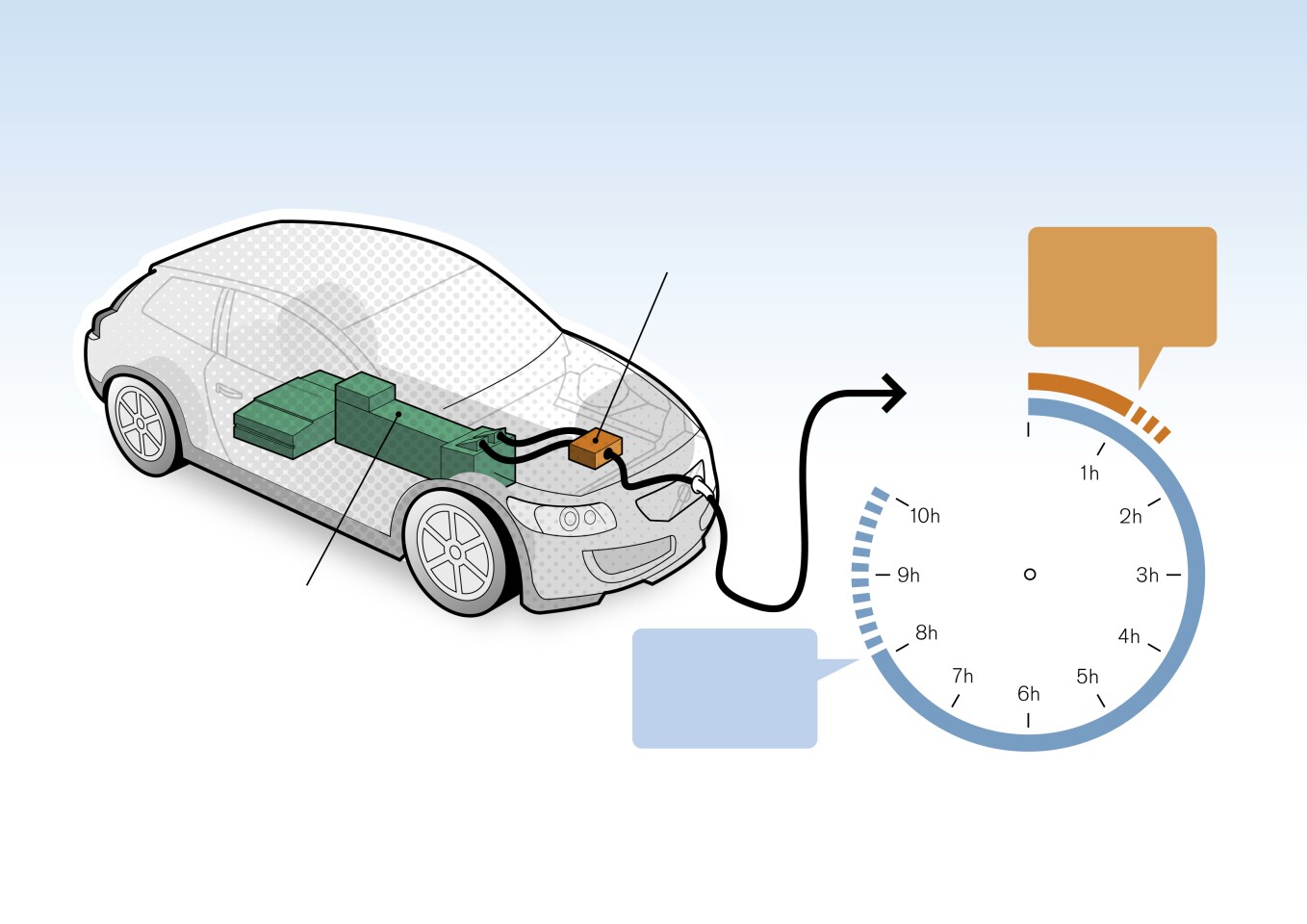Volvo is working on what it calls the world's first three-phase on-board charger. The charger promises to make electric-vehicle charging much faster than it is now. Instead of charging a vehicle overnight or for hours at a time, Volvo claims its on-board unit will allow users to completely refresh their batteries in just 1.5 hours.
Volvo's fast charger has the capability to make a marked improvement over what current on-board electric vehicle charging hardware offers. With a 400-volt three-phase power source, the 22-kW charger can deliver 50 miles (80 km) worth of driving power within half an hour. A full charge will take 1.5 hours.
Volvo's hardware also allows for 230-volt charging with a more traditional overnight time frame. Depending on the available current, a 230-volt supply will charge the battery to full in 8 to 10 hours.

"The user can 'top up' the battery pack with electricity one or more times during the day," explains Lennart Stegland, Volvo's vice president for electric propulsion systems. "This means that the total daily range is significantly extended, yet with the same low operating cost compared to a car with a conventional power train."
Volvo plans to test its fast charger out on a fleet of C30 Electric cars.
Volvo isn't the first automaker to address the issue of long charging times. Nissan began distributing a quick charger system earlier this year, and Tesla recently launched a network of "Superchargers." Unlike those systems, however, Volvo's charger is small enough to fit on board the car.
Source: Volvo







